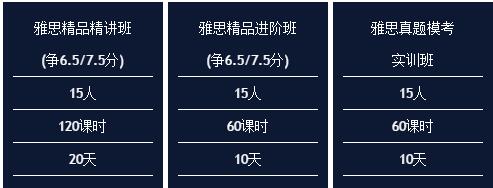雅思剑11阅读Test2Passage2原文+答案解析
2017/4/9 13:37:42来源:新航道作者:新航道
摘要:剑桥雅思系列是同学们在备考中最好的教材之一,所以同学们在备考的时候是要准备一些这方面的资料的。上海新航道雅思小编给大家带来了雅思剑11Test2Passage2阅读答案解析,希望可以帮助广大雅思考生轻松备考雅思。
剑桥雅思系列是同学们在备考中最好的教材之一,所以同学们在备考的时候是要准备一些这方面的资料的。上海新航道雅思小编给大家带来了雅思剑11Test2Passage2阅读答案解析,希望可以帮助广大雅思考生轻松备考雅思。
剑桥雅思11Test2阅读原文READING PASSAGE 2
What destroyed the civilisation of Easter Island?
A Easter Island, or Rapu Nui as it is known locally, is home to several hundred ancient human statues ?— the moai. After this remote Pacific island was settled by the Polynesians, it remained isolated for centuries. All the energy and resources that went into the moai — some of which are ten metres tall and weigh over 7,000 kilos — came from the island itself. Yet when Dutch explorers landed in 1722, they met a Stone Age culture. The moai were carved with stone tools, then transported for many kilometres, without the use of animals or wheels, to massive stone platforms. The identity of the moai builders was in doubt until well into the twentieth century. Thor Heyerdahl, the Norwegian ethnographer and adventurer, thought the statues had been created by pre-lnca peoples from Peru. Bestselling Swiss author Erich von Daniken believed they were built by stranded extraterrestrials. Modern science — linguistic, archaeological and genetic evidence — has definitively proved the moai builders were Polynesians, but not how they moved their creations. Local folklore maintains that the statues walked, while researchers have tended to assume the ancestors dragged the statues somehow, using ropes and logs.
B When the Europeans arrived, Rapa Nui was grassland, with only a few scrawny trees. In the 1970s and 1980s, though, researchers found pollen preserved in lake sediments, which proved the island had been covered in lush palm forests for thousands of years. Only after the Polynesians arrived did those forests disappear. US scientist Jared Diamond believes that the Rapanui people — descendants of Polynesian settlers — wrecked their own environment. They had unfortunately settled on an extremely fragile island — dry, cool, and too remote to be properly fertilised by windblown volcanic ash. When the islanders cleared the forests for firewood and farming, the forests didn’t grow back. As trees became scarce and they could no longer construct wooden canoes for fishing, they ate birds. Soil erosion decreased their crop yields. Before Europeans arrived, the Rapanui had descended into civil war and cannibalism, he maintains. The collapse of their isolated civilisation, Diamond writes, is a ‘worst-case scenario for what may lie ahead of us in our own future’.
C The moai, he thinks, accelerated the self-destruction. Diamond interprets them as power displays by rival chieftains who, trapped on a remote little island, lacked other ways of asserting their dominance. They competed by building ever bigger figures. Diamond thinks they laid the moai on wooden sledges, hauled over log rails, but that required both a lot of wood and a lot of people. To feed the people, even more land had to be cleared. When the wood was gone and civil war began, the islanders began toppling the moai. By the nineteenth century none were standing.
D Archaeologists Terry Hunt of the University of Hawaii and Carl Lipo of California State University agree that Easter Island lost its lush forests and that it was an ‘ecological catastrophe’ — but they believe the islanders themselves weren’t to blame. And the moai certainly weren’t. Archaeological excavations indicate that the Rapanui went to heroic efforts to protect the resources of their wind-lashed, infertile fields. They built thousands of circular stone windbreaks and gardened inside them, and used broken volcanic rocks to keep the soil moist. In short, Hunt and Lipo argue, the prehistoric Rapanui were pioneers of sustainable farming.
E Hunt and Lipo contend that moai-building was an activity that helped keep the peace between islanders. They also believe that moving the moai required few people and no wood, because they were walked upright. On that issue, Hunt and Lipo say, archaeological evidence backs up Rapanui folklore. Recent experiments indicate that as few as 18 people could, with three strong ropes and a bit of practice, easily manoeuvre a 1,000 kg moai replica a few hundred metres. The figures’ fat bellies tilted them forward, and a D-shaped base allowed handlers to roll and rock them side to side.
F Moreover, Hunt and Lipo are convinced that the settlers were not wholly responsible for the loss of the island’s trees. Archaeological finds of nuts from the extinct Easter Island palm show tiny grooves, made by the teeth of Polynesian rats. The rats arrived along with the settlers, and in just a few years, Hunt and Lipo calculate, they would have overrun the island. They would have prevented the reseeding of the slow-growing palm trees and thereby doomed Rapa Nui’s forest, even without the settlers’ campaign of deforestation. No doubt the rats ate birds’ eggs too. Hunt and Lipo also see no evidence that Rapanui civilisation collapsed when the palm forest did. They think its population grew rapidly and then remained more or less stable until the arrival of the Europeans, who introduced deadly diseases to which islanders had no immunity. Then in the nineteenth century slave traders decimated the population, which shrivelled to 111 people by 1877.
G Hunt and Lipo’s vision, therefore, is one of an island populated by peaceful and ingenious moai builders and careful stewards of the land, rather than by reckless destroyers ruining their own environment and society. ‘Rather than a case of abject failure, Rapu Nui is an unlikely story of success’, they claim. Whichever is the case, there are surely some valuable lessons which the world at large can learn from the story of Rapa Nui.
Questions 21-24
Complete the summary below.
Choose ONE WORD ONLY from the passage for each answer.
Write your answers in boxes 21-24 on your answer sheet.
Jared Diamond’s View
Diamond believes that the Polynesian settlers on Rapa Nui destroyed its forests, cutting down its trees for fuel and clearing land for 21 __________. Twentieth-century discoveries of pollen prove that Rapu Nui had once been covered in palm forests, which had turned into grassland by the time the Europeans arrived on the island. When the islanders were no longer able to build the 22 __________ they needed to go fishing, they began using the island’s 23 __________ as a food source, according to Diamond. Diamond also claims that the moai were built to show the power of the island’s chieftains, and that the methods of transporting the statues needed not only a great number of people, but also a great deal of 24 __________.
Questions 25 and 26
Choose TWO letters, A-E.
Write the correct letters in boxes 25 and 26 on your answer sheet.
On what points do Hunt and Lipo disagree with Diamond?
A the period when the moai were created
B how the moai were transported
C the impact of the moai on Rapanui society
D how the moai were carved
E the origins of the people who made the moai
雅思剑11Test2 Passage 2阅读答案解析
Question 14
答案: ii
关键词: undisputed answer
定位原文: A段的第6、9句“The identity of.. ” 摩艾像的建造者身份直到20世纪才确定,现代科学(语言学等)确认建造者是波利尼西亚人。
解题思路: A段首先介绍了摩艾像的背景,之后探讨了摩艾像建造者的身份问题。第六句中说到20世纪时人们才对这一问题有了确定的答案,之后描述了人们对这个问题存在的一些猜测;但在本段第九句中明确说到现代科学给出了确定的答案,即摩艾像的建造者是波利尼西亚人。
Question 15
答案: ix
关键词: food resources
定位原文: B段的第6、7、8句。“When the islanders…”当岛上居民为了木柴和农耕清除了树林,森林便不再生长。随着树木的减少,他们不再能够建造独木舟来捕鱼,转而以鸟类为食。水土流失降低了他们的作物产量。
解题思路: 文章B段重点描述了美国科学家Jared Diamond对于拉帕努伊环境破坏的观点,他认为是当地人自己造成了这种情况,并且从不同的方面进行了分析。其中在第六、七句提到由于岛上居民将树林用作木柴和农耕,树木受到破坏不再生长,从而无法继续造船捕鱼;之后也在第八句提到了作物产量减少的问题,这与ix选项所表达的减少食物资源一致。因此本题答案为ix。
Question 16
答案: viii
关键词: the statues, worse
定位原文: C段第1句“The moai, he thinks…”他认为摩艾像加速了当地的自我毁灭。
解题思路: 本段首句提4摩艾像加i 了当地的自我毁灭, 之后Diamond在本段中具体解释了这一观点, 选项中viii的表述与本段内容一致。因此本题 答案为viii。
Question 17
答案: i
关键词:innovative, environment, management, practices
定位原文: D段第3、4句“Archaeological excavations...”考古发掘表明拉帕努伊人做出了巨大的努力去保护他们受狂风席卷且并不肥沃的土地。他们建造了上千的环形石头防风林,在其中栽培花木,并使用破碎的火山岩保持土壤湿润。
解题思路:本段Terry Hunt和Carl Lipo提出了不同的观点,即他们认为生态破坏并非是当地居民或摩艾像的责任,相反他们还做出了巨大的努力。 其中第3句表达了这一观点,而第4句则是具体地写到circular stone windbreaks, 以证明他们的努力。因此本题答案为i。
Question 18
答案: iv
关键词: a local belief
定位原文: E段第3句 “On that issue, Hunt…” Hunt和Lipo说,在这个问题上,考古学证据支持拉帕努伊的民间说法。
解题思路: 本段讲的是摩艾像的移动方式。Hunt和Lipo 对此提出了不同的看法,他们认为由于摩艾像特殊的形状,不需要太多的人力和木头就可以移动它们,并且提出这与当地的民间说法一致。 因此本题答案为iv。
Question 19
答案: vii
关键词: outside the inhabitants, control
定位原文: F段第1句 “Moreover, Hunt…” 此外,Hunt和Lipo相信树木破坏并非完全由岛上居民所致。
解题思路:本段中Hunt和Lipo的观点是岛上环境的破坏并不是岛上居民造成的,而是由于鼠类的泛滥以及欧洲人的登陆,而这是当地居民无法控制的,与 vii 选项 Destruction outside the inhabitants' control一致。因此本题答案为vii。
Question 20
答案: vi
关键词: opposing views
定位原文: G段第1、2句 “Hunt and Lipo’s vision…” 因此,以Hunt和Lipo的观点来看,这个岛屿上居住着和平的有独创性的摩艾像建造者们以及小心翼翼的土地维护者,而不是不计后果毁掉自己的环境与社会的破坏者。他们认为“拉帕努伊是一个不太可能的成功故事,而非一个不幸的失败事件”。
解题思路:在G段的第1句和第2句中,都提到了与 opposing views about the Rapanui people 相关的内容,同时Hunt和Lipo再次持积极的态度,相当于对自己的观点进行了总结。因此本题答案为vi。
Question 21
答案: farming
关键词: cutting down its trees for fuel, clearing land
定位原文: B段第6句“When the islanders cleared the forests for firewood and farming…” 当岛上居民为了木柴和农耕清除了树林,森林便不再生长。
解题思路:Jared Diamond的观点在B段出现。本题提到了当地人破坏森林,并且cutting down trees 和clearing land, 这一信息出现在原文中B段第6句,这一行为的目的是为了 firewood and farming; 这一并列结构在题目中被for fuel同义替换,clearing land的目的也可以就此找到, 因此本题答案为farming。
Question 22
答案: canoes
关键词:go fishing
定位原文:B段第7句 “As trees became scarce and they could no…”随着树木的减少,他们不再能够建造独木舟来捕鱼,转而以鸟类为食。
解题思路: 题目说到当地岛上居民不再能够建造捕鱼所需的东西,在原文B段第七句中出现了 could no longer construct, 这与题目中 no longer able to build意思一致;而文中提到的for fishing 也与题目中 they needed to go fishing 意思一致,因此可见wooden canoes为所需名词, 同时有要求one word,得出答案。
Question 23
答案: birds
关键词:food source
定位原文: 同上题
解题思路:上一题中已经提到人们无法继续建造wooden canoes, 在B段第七句中说到他们以鸟类为食;而本题提到了food source, 判断本题答案为 birds。
Question 24
答案: wood
关键词: people
定位原文: C段第4句“Diamond thinks they laid the moai on…” Diamond认为他们将摩艾像放在木质雪橇上,在木轨上拉动,但这需要大量的木头和人力。
解题思路:本题说到运送雕像所需要的东西,之后出现 not only..., but also这一并列结构,而在原文 C段第四句中,也以并列结构描述了所需要的是 both a lot of wood and a lot of people; 由于题目中已经出现了people, 因此本题答案为wood。
Question 25 and Question 26
答案: B & C
关键词:Disagree
定位原文: C、D、E 三段
解题思路:ADE三项全文并没有提及;关于摩艾像的运输,Hunt和Lipo 二人与Diamond持不同看法;其中Diamond的观点出现在文章C段,他认为雕像是放在木质雪橇上然后通过木轨被拉动,而Hunt和Lipo的观点出现在E段,他们认为雕像的移动同当地说法一致,雕像可以在几个人和没有绳索的控制下直立移动;对于拉帕努伊社会的影响方面,Diamond认为摩艾像加速了当地的破坏,这一观点出现在C段;而Hunt和Lipo认为摩艾像对当地社会起到了积极的作用,这一观点在D段和E段都进行了具体的描述。
以上就是小编为大家带来关于《剑桥雅思11真题阅读》供大家阅读参考,新航道雅思资料频道将第一时间为考生发布最全、最新、最专业的雅思资讯及雅思考试资料及机经。
更多雅思培训的相关信息,请关注上海新航道雅思频道 。
如需下载雅思相关资料请与上海新航道雅思页面 的“在线客服”联系。
或在下方注册表格内,请提交“姓名+电话+邮箱”,我们将于24小时内发送给你!
免费获取资料
热报课程
- 雅思课程
| 班级名称 | 班号 | 开课时间 | 人数 | 学费 | 报名 |
|---|
免责声明
1、如转载本网原创文章,情表明出处
2、本网转载媒体稿件旨在传播更多有益信息,并不代表同意该观点,本网不承担稿件侵权行为的连带责任;
3、如本网转载稿、资料分享涉及版权等问题,请作者见稿后速与新航道联系(电话:021-64380066),我们会第一时间删除。
全真模拟测试
制作:每每









